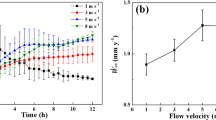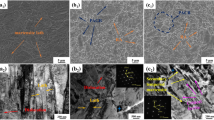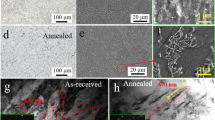Abstract
RECENT developments in concrete offshore structures have drawn attention to a disturbing ignorance of the mechanism by which steel corrosion is prevented when it is embedded in dense concrete1. The traditional view has been that the metal remains passivated owing to the high pH (∼ 12.5) of the pore solution in concrete. It is, however, well known that relatively small concentrations of Cl− destroy the corrosion inhibitive properties of non-buffered alkalis and ∼ 700 p.p.m. of Cl− will depassivate steel in limewater at pH 12.5 (ref. 2). Since seawater contains concentrations of Cl− far in excess of this figure, and since penetration by these ions to the reinforcing bars in concrete takes place within a small fraction of the service life of a marine concrete structure3, corrosion might be expected to be a frequent problem. In practice, however, there are many examples of reinforced concrete structures which have remained durable in seawater for 30 yr and more. Such corrosion problems as have been reported are, in the majority of cases, associated only with areas immediately above the level of high tide, where the concrete is not maintained in a saturated condition.
This is a preview of subscription content, access via your institution
Access options
Subscribe to this journal
Receive 51 print issues and online access
$199.00 per year
only $3.90 per issue
Buy this article
- Purchase on Springer Link
- Instant access to full article PDF
Prices may be subject to local taxes which are calculated during checkout
Similar content being viewed by others

References
Somerville, G., and Taylor, H. P. J., Concrete in the Oceans: Report No. 2 (Department of Industry, Technology Reports Centre, Orpington, Kent, 1974).
Hausmann, D. A., Mater. Prot., 6 (11), 19–23 (1967).
Gjørv, O. E., in Proc. FIP Symp. on Concrete Sea Structures, Tblisi, 1972, 141–145 (FIP, London, 1973).
Wilkins, N. J. M., in Concrete in the Oceans: Report No. 2, 80–85 (Department of Industry, Technology Reports Centre, Orpington, Kent, 1974).
Browne, R. D., and Domone, P. L., in Proc. Int. Conf. on Underwater Construction Technology, Cardiff, 1975 (University College, Cardiff, in the press).
Nicol, A., Revue Matér. Constr. Trav. publ., 537, 149–156 (1960); 538/9, 190–196 (1960).
Moreau, M., Revue Matér. Constr. Trav. publ., 678, 4–17 (1973).
Gilroy, D., and Mayne, J. E. O., Br. Corros. J., 1, 161–165 (1966).
Pourbaix, M., Corros. Sci., 14, 25–83 (1974).
Lewis, D. A., in Proc. 1st. Int. Cong. on Metallic Corrosion, London, 1961, 547–552 (Butterworths, London, 1962).
Monfore, G. E., Verbeck, G. J., Proc. Am. Conc. Inst., 57, 491–515 (1960).
Beaton, J. L., Spellmann, O. L., and Stratfull, R. F., Highw. Res. Rec., 204, 11–21 (1967).
Author information
Authors and Affiliations
Rights and permissions
About this article
Cite this article
PAGE, C. Mechanism of corrosion protection in reinforced concrete marine structures. Nature 258, 514–515 (1975). https://doi.org/10.1038/258514a0
Received:
Accepted:
Issue Date:
DOI: https://doi.org/10.1038/258514a0
This article is cited by
-
A corrosion-resistant RuMoNi catalyst for efficient and long-lasting seawater oxidation and anion exchange membrane electrolyzer
Nature Communications (2023)
-
Electrochemical tomography as a nondestructive technique to study localized corrosion of metals
npj Materials Degradation (2021)
-
A critical review of the effect of concrete composition on rebar–concrete interface (RCI) bond strength: A case study of nanoparticles
SN Applied Sciences (2020)
-
The pH of Cement-based Materials: A Review
Journal of Wuhan University of Technology-Mater. Sci. Ed. (2020)
-
Enhanced Predictive Modelling of Steel Corrosion in Concrete in Submerged Zone Based on a Dynamic Activation Approach
International Journal of Concrete Structures and Materials (2019)
Comments
By submitting a comment you agree to abide by our Terms and Community Guidelines. If you find something abusive or that does not comply with our terms or guidelines please flag it as inappropriate.


